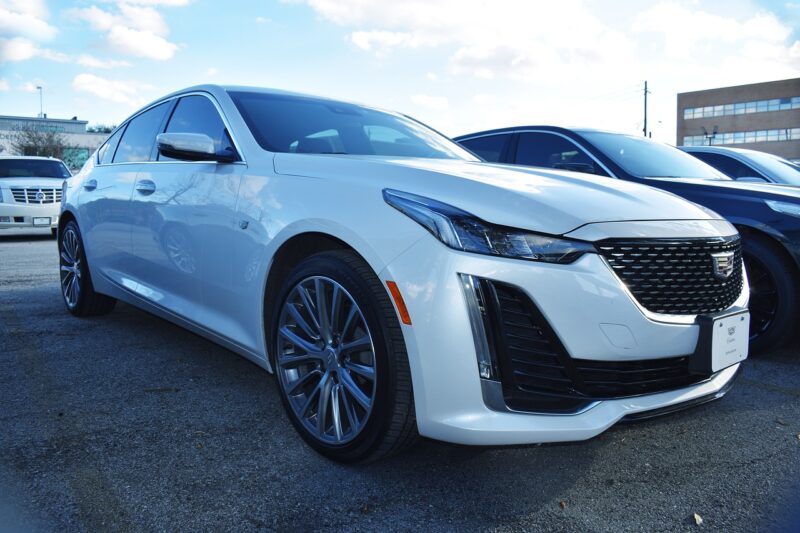How to Decide Between an SUV and a Sedan: Understanding Space, Style, and Practicality
November 14, 2024

Deciding between an SUV and a sedan is one of the most common dilemmas faced by car buyers today. With the automotive market continually evolving, the benefits and drawbacks of each category may become blurred. This article aims to dissect the fundamental aspects of SUVs and sedans, focusing on space, style, and practicality, to help potential buyers navigate this critical decision.
1. Understanding SUVs and Sedans
SUVs, or Sport Utility Vehicles, are renowned for their larger size, elevated stance, and increased cargo capacity. They often come equipped with all-wheel or four-wheel drive, making them ideal for varied terrains. Conversely, sedans are typically smaller, offering a car-like feel with better fuel efficiency and handling.
1.1 What is an SUV?
An SUV is built with a higher ground clearance and offers more space for passengers and cargo. Some popular models include the Toyota RAV4, Honda CR-V, and Ford Explorer.
1.2 What is a Sedan?
Sedans are built for comfort and efficiency, making them popular choices for daily commutes. Models like the Honda Accord, Toyota Camry, and BMW 3 Series are some of the best-selling sedans.
2. Space Considerations
When it comes to space, the differences between SUVs and sedans become quite pronounced.
2.1 Passenger Space
– SUVs: Designed with ample room for passengers—many mid-size and full-size SUVs can comfortably seat 7-8 individuals. This is ideal for families or those who frequently travel with groups.
– Sedans: Usually accommodate 4-5 passengers with more comfortable legroom in the front. However, rear passenger space can be cramped, especially on longer trips.
2.2 Cargo Space
– SUVs: These vehicles offer expansive cargo spaces, especially when rear seats are folded down. They can carry hefty loads, making them suitable for outdoor adventures or road trips with lots of gear.
– Sedans: While they have trunks, the cargo capacity often falls short compared to SUVs. This can be limiting when transporting large items or during family outings.
3. Style and Aesthetics
Many buyers choose their vehicle based on appearance and personal style, and both SUV and sedan categories offer diverse options.
3.1 SUV Styles
SUVs typically showcase a rugged, commanding presence on the road, attracting buyers looking for an adventurous aesthetic. They can also come in various trim levels that add a luxurious touch, catering to a wide range of personal styles.
3.2 Sedan Styles
Sedans tend to have a sleek, streamlined appearance that portrays elegance. They often feature more refined lines and a lower profile, appealing to those who prioritize sophistication over bulk.
4. Practicality: Fuel Efficiency and Maintenance
Practicality can largely influence which vehicle a buyer decides upon, particularly concerning fuel efficiency and maintenance costs.
4.1 Fuel Efficiency
– SUVs: Traditionally, SUVs have been less fuel-efficient than sedans due to their size and weight. However, advancements in technology have led to the introduction of hybrid and electric SUVs that counteract this disadvantage.
– Sedans: Generally offer better fuel efficiency, making them ideal for long commutes and less frequent trips to the gas station.
4.2 Maintenance Costs
– SUVs: Maintenance can often be more expensive due to larger tires, brake systems, and four-wheel drive components. However, their durability makes them excellent for withstanding various conditions over time.
– Sedans: Typically incur lower maintenance costs, as they possess less complex systems and components.
5. Safety Features
Safety is a critical consideration when selecting a vehicle, and both classes offer numerous safety features.
– SUVs: Often come equipped with a higher ride height, which can offer visibility advantages and additional safety in collision scenarios due to their sheer mass.
– Sedans: Generally perform well in crash tests, and many are equipped with advanced safety features such as lane departure warnings, autonomous emergency braking, and adaptive cruise control.
Conclusion: Making Your Decision
Choosing between an SUV and a sedan ultimately relies on personal preferences and lifestyle needs. If you seek ample space, versatility, and rugged capability, an SUV may be your best option. Conversely, if you prioritize fuel efficiency, sleek style, and cost-effectiveness, a sedan is likely the better choice.
In summary, thoroughly assess your lifestyle requirements, budget, and personal style before making a decision. Whether you go for an elongated SUV or a stylish sedan, understanding the nuances of each vehicle type will ensure that your chosen car meets all your expectations and needs.
Now, with all these factors in mind, you are better equipped to make an informed decision in the exciting journey of choosing a new vehicle!






